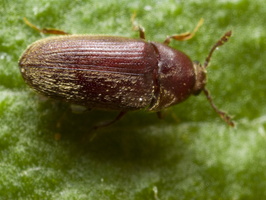
- Trixagidae
- false metallic wood-boring beetles
- Hüpfkäfer
- blusvabaliai
- lēcējcvaboļu dzimta
- podrywkowate
The larvae are soil-dwelling, siphoning fluid from mycorrhizae attached to trees. The adults are short-lived, with the adult males being noted for a complex mating dance. Like some other elateroids, they are capable of clicking.
Aptinkami miškuose ant žolinių augalų, po dumblių sąnašomis jūros krantuose. Vabalai vystosi trūnijančioje lapuočių medžių medienoje.
